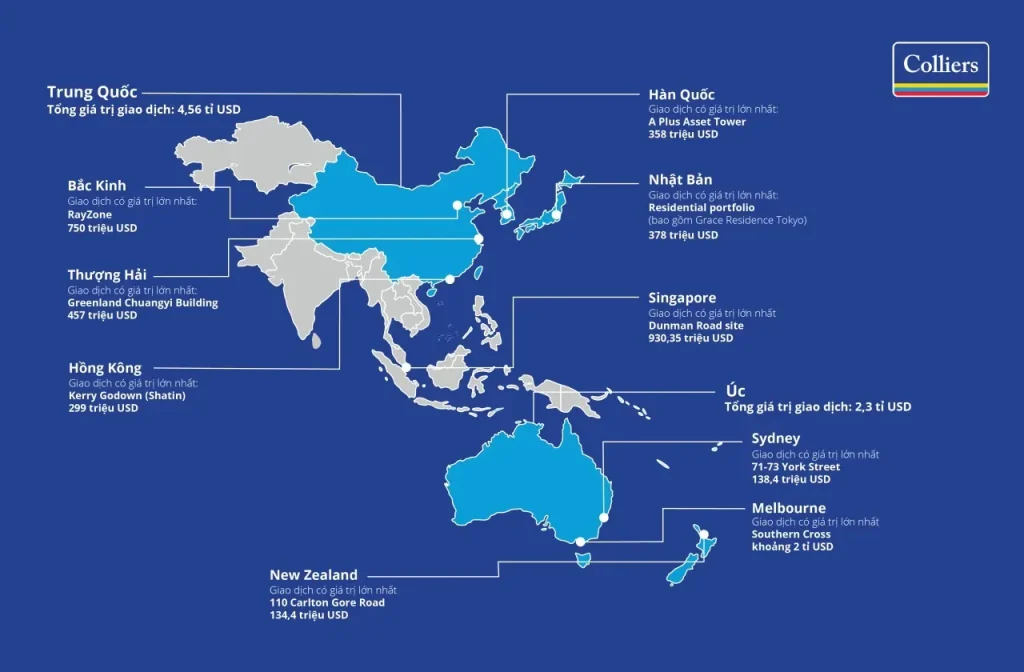Asia-Pacific markets have shown a notable uptick on Monday, sparking optimism among investors in light of potential stimulus measures from China and ongoing U.S. trade negotiations. The region’s economic trajectory looks promising as China’s Finance Minister Lan Fo’an hinted at adopting proactive macroeconomic policies aimed at sustaining growth targets. This commitment from the Asian economic powerhouse positions it as a stabilizing force in the global economy. Simultaneously, traders are keenly observing the developments in the U.S. trade situation, particularly following President Trump’s indications of a possible delay in implementing “reciprocal tariffs.” Early gains were reported across major indices, with Japan’s Nikkei 225 climbing by 0.82% and South Korea’s Kospi index inching up 0.32%, signaling a buoyant start to the trading week.
The financial landscapes of the Asia-Pacific region are witnessing a revival, reflecting a robust investor sentiment driven by various factors. Recent announcements regarding enhanced fiscal policies from China coupled with pivotal trade talks with the U.S. are creating a fertile ground for economic activity. Notably, indices such as the Nikkei 225 and Kospi are experiencing significant upward movements, indicative of the region’s resilience amid global uncertainties. Stakeholders are closely monitoring the initiatives rolling out in response to economic challenges, which could bolster Asian economic growth substantially in the coming months. The interconnected nature of these markets will play a crucial role as they adapt to both domestic developments and international trade dynamics.
Anticipating China’s Stimulus Measures
The Asia-Pacific markets have shown notable resilience as they reacted positively to the anticipated stimulus measures from China. Investors are hopeful that the Chinese government’s proactive macroeconomic stance will not only stabilize the national economy but also uplift regional markets. Comments from China’s Finance Minister Lan Fo’an about adopting more aggressive policies resonate with those seeking assurance amidst global economic uncertainties. As China strives to achieve its growth targets, the implications of these measures could play a critical role in bolstering the confidence of investors across the Asia-Pacific region.
Moreover, the potential for increased government spending and investment could serve as a catalyst for growth in neighboring economies. Countries within the Asia-Pacific are closely watching how these stimulus measures could impact trade relationships and market behavior. With the expectation of a more stable and expansive Chinese economy, investors may begin to shift their focus toward emerging markets in Asia that can benefit from enhanced economic activity. Thus, the upcoming press conference by Chinese authorities holds significant weight for market participants who are eager for insights on policy directions.
Impact of U.S. Trade Negotiations on Asia-Pacific Markets
The ongoing trade negotiations between the U.S. and various Asia-Pacific countries continue to influence investor sentiment in the region’s markets. Recent statements from U.S. President Donald Trump suggest that a delay in implementing “reciprocal tariffs” might weigh on the negotiations, igniting discussions on how such policies can impact Asian economic growth. These negotiations are crucial for the dynamics of trade within the Asia-Pacific and could provide clarity on the path forward for businesses and investors, thereby impacting indices such as Japan’s Nikkei 225 and South Korea’s Kospi.
In light of the uncertainty surrounding U.S.-China trade relations, market participants are keenly observant of how these talks unfold. On one hand, successful negotiations leading to a reduction in trade barriers could enhance growth prospects for Asian economies. On the other hand, continued tensions may lead to market volatility as investors reposition their portfolios in response to news, affecting not only the Nikkei 225 and Kospi but potentially the broader Asia-Pacific market performance.
Market Reactions in Asia-Pacific: Nikkei 225 and Kospi Index
The Nikkei 225 has seen an upward trend, gaining 0.82% as investors responded positively to China’s anticipated economic stimulus. This positive momentum is indicative of the broader confidence among traders in Japan’s market potential. Similarly, South Korea’s Kospi index opened 0.32% higher, reflecting similar investor sentiment in the region. Factors such as government action in China and trade negotiations foster a sense of optimism, potentially lifting the indices further as the day’s trading unfolds.
Furthermore, the movements in the Nikkei 225 and Kospi indicate a more significant trend toward heightened investor activity in the Asia-Pacific markets. As Chinese stimulus measures aim to bolster economic growth, markets like Japan and South Korea may reap the benefits of increased consumer demand, manufacturing output, and ultimately higher corporate earnings. As a result, traders may begin to assess risk appetites with an eye on how shifts in the Nikkei 225 and Kospi index could serve as barometers for economic health in the region.
Asian Economic Growth: A Collective Response
In light of the anticipated stimulus measures from China, Asian economic growth seems poised for a collective uplift. Countries in the Asia-Pacific are interconnected in ways that mean growth or challenges in China ripple through the regional economies. As sectors such as technology, trade, and consumer goods are closely linked, measures taken by the Chinese government to inject liquidity and drive growth can enhance prospects for neighboring countries. This interconnectedness is critical for analysts who monitor economic indicators across the region to gauge broader economic health.
Furthermore, as investors react to the possibility of strengthened economic growth, they may start to consider reallocating their investments towards sectors that could be favored by increased consumer demand and higher productivity levels. With China set to play a significant role in this dynamic, related terms such as ‘Asian economic growth’ not only reflect the sentiment among market participants but also underline the collective responsibility of nations to foster connectivity and collaboration amid global economic challenges.
Outlook for Asian Markets Amid Global Uncertainties
As the Asia-Pacific region navigates through global economic uncertainties, the outlook for its markets is heavily influenced by domestic and international developments. With China’s promise of more proactive macroeconomic policies, investors may find reassurance that economic stability remains a priority. The response from markets such as the Nikkei 225 and the Kospi index reflects a cautious optimism that could resonate as long as economic policies align with growth expectations.
Nevertheless, ongoing geopolitical tensions, particularly in relation to U.S. trade negotiations, may still keep markets on edge. This situation requires stakeholders to remain vigilant, as changes in policy stances can lead to swift adjustments in market performance. By closely monitoring these developments, investors can better position themselves to capitalize on opportunities while managing risks amid an evolving economic landscape.
Investing in the Asia-Pacific Markets: Strategic Approaches
Investors looking to capitalize on the anticipated stimulus measures in the Asia-Pacific markets must adopt strategic approaches that consider both opportunities and risks. With indexes like the Nikkei 225 and the Kospi showing early signs of growth, thoughtful consideration of where to invest is essential. This may involve evaluating sectors likely to benefit from increased government spending and enhanced economic activity as a result of China’s stimulus plans.
Furthermore, a diversified portfolio could serve as protection against volatility stemming from the unpredictable nature of U.S. trade negotiations. By spreading investments across different sectors in Asia, investors could mitigate risks associated with potential trade barriers or economic slowdowns while still positioning themselves to benefit from strong growth in the region.
Technological Innovations in Asia: A Growth Catalyst
Technology remains a significant growth catalyst in the Asia-Pacific region, with countries like China and South Korea leading the charge. The rise of digital economy and innovation sectors can amplify the positive effects of Chinese stimulus measures, as investments in technology often lead to increased productivity and job creation. The thriving tech environments in these countries contribute not only to local economies but also to broader Asian economic growth.
Moreover, as the region invests in smart technologies and digital infrastructure, the potential for collaboration among Asia-Pacific nations increases. This cooperation can frame a new narrative in which technology drives mutual growth, positioning these nations as leaders in the global economy. Investing in technology sectors could therefore become a strategic move for anticipating economic shifts and trends tied to the stimulus measures being implemented.
Consumer Confidence and Spending Trends in Asia-Pacific
As optimism grows in the Asia-Pacific markets due to China’s proposed economic stimulus, consumer confidence is expected to rise, buoying spending trends in the region. A confident consumer base is crucial for sustaining economic growth, serving as a pivotal driver for sectors such as retail and services. Investors are keenly observing how consumer sentiment shifts in response to government policies aimed at boosting economic stability.
Furthermore, with trade negotiations creating an undercurrent of uncertainty, consumer spending will play a vital role in mitigating potential downturns. Regions experiencing a surge in consumer confidence could see significant economic benefits, reinforcing the interconnected nature of economies in the Asia-Pacific. As businesses adapt to shifting consumer behaviors, those invested in these markets should consider strategies tailored toward enhancing customer experience and expanding market reach.
Geopolitical Factors Shaping Asia-Pacific Markets
Geopolitical factors significantly shape the landscape of Asia-Pacific markets, driving investor decisions and market performance. Tensions derived from trade negotiations with the U.S. can influence investor outlook as they weigh the potential impact on regional economies. Increased tariffs or trade barriers might prompt caution among investors, leading to market volatility as businesses and stakeholders adjust to new realities.
Conversely, progress in trade negotiations could provide much-needed clarity and stability, translating to market gains across the region. As nations work to navigate these complex geopolitical waters, investors must remain proactive about potential changes that could arise from fluctuations in international relations. By keeping abreast of geopolitical developments, market participants can better position themselves to take advantage of emerging opportunities while safeguarding against unforeseen risks.
Frequently Asked Questions
What are the recent developments in the Asia-Pacific markets regarding China stimulus measures?
The Asia-Pacific markets have recently risen as investors are optimistic about additional stimulus measures announced by China. Finance Minister Lan Fo’an indicated that the country would adopt proactive macroeconomic policies to achieve its growth targets and support global economic stability, which has positively influenced market sentiment.
How are U.S. trade negotiations affecting Asia-Pacific markets?
U.S. trade negotiations are significantly impacting the Asia-Pacific markets as investors closely monitor updates. The anticipation of a potential delay in the implementation of ‘reciprocal tariffs’ by President Trump has created a cautious optimism, driving market gains in the region.
What was the performance of the Nikkei 225 in the latest trading session?
In the latest trading session, Japan’s Nikkei 225 index gained 0.82%, reflecting a positive reaction from investors to stimulus measures in China and favorable developments in U.S. trade negotiations.
What are the key indices moving in the Asia-Pacific markets today?
Today, key indices in the Asia-Pacific markets include Japan’s Nikkei 225, which rose by 0.82%, South Korea’s Kospi index, gaining 0.32%, and Australia’s S&P/ASX 200, which was up by 0.44%. These increases are largely influenced by potential China stimulus measures and ongoing U.S. trade discussions.
How is Asian economic growth trending amidst current market conditions?
Asian economic growth is showing positive signs amidst current market conditions, particularly due to anticipated stimulus measures from China. These efforts are expected to provide stability and momentum to the region’s economy, fostering investor confidence in the Asia-Pacific markets.
| Market Index | Change (%) | Comments |
|---|---|---|
| Nikkei 225 (Japan) | +0.82% | Growth in response to anticipated stimulus measures from China. |
| Topix (Japan) | +1.11% | Increased investor optimism following Chinese financial policy announcements. |
| Kospi (South Korea) | +0.32% | Positive movement attributed to ongoing U.S.-China trade negotiations. |
| Kosdaq (South Korea) | +0.29% | Small-cap index reflects moderate growth in the tech sector. |
| S&P/ASX 200 (Australia) | +0.44% | Market buoyed by positive market sentiment following China’s comments. |
Summary
Asia-Pacific markets are experiencing positive momentum driven by expectations of increased stimulus from China. The collective rise in various indices, including the Nikkei 225 and the Kospi, reflects a cautiously optimistic investor sentiment as they await further developments in U.S.-China trade negotiations. The statements made by Chinese officials regarding proactive macroeconomic policies have instilled confidence across the region, suggesting a potential stabilizing force for the global economy. As the Asia-Pacific markets continue to evolve, they remain closely attuned to geopolitical relationships that could impact future economic conditions.



